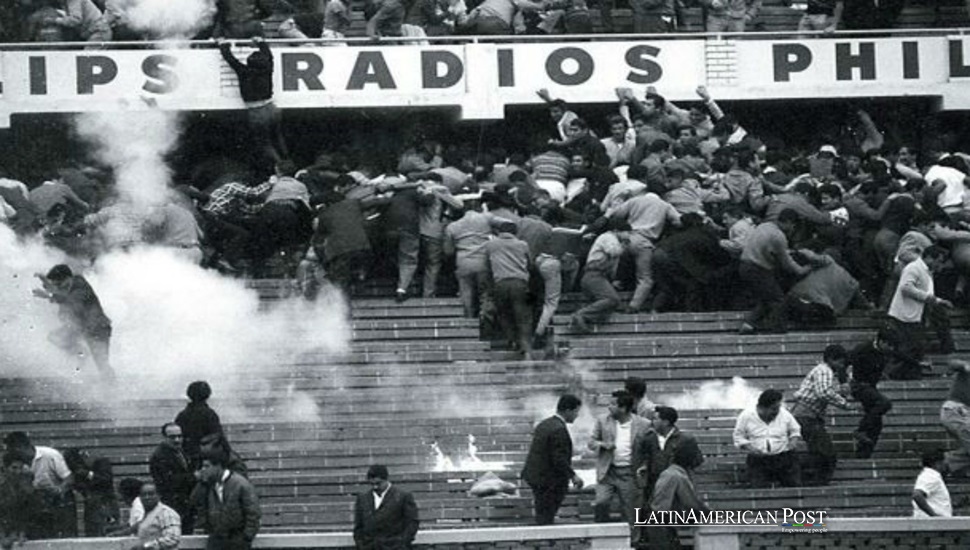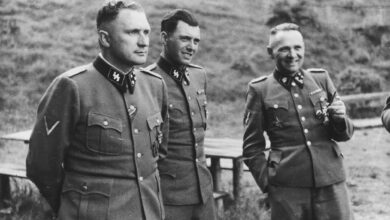Remembering Soccer’s Darkest Day: 60 Years After Peru’s Estadio Nacional Disaster

Just over sixty years ago, on May 24, 1964, a soccer match in Lima became one of the deadliest stadium disasters in history. What began with a disputed call by a referee ended in tragedy, leaving 328 people dead and countless others injured.
A Game of High Stakes and High Tensions
On May 24, 1964, the Estadio Nacional in Lima was packed with nearly 50,000 spectators, all eager to witness a crucial Olympic qualifier soccer match between Peru and Argentina. The stakes were high, as the tournament would determine which teams would represent South America at the Tokyo Olympics. For Peru, defeating Argentina—a formidable opponent and tournament leader—was vital, offering the possibility of advancing to the top three and reigniting their hopes of Olympic qualification.
Despite the steep ticket prices, which equaled a day’s wages for many, the stadium was sold out. Fans were excitedly buzzing, their hopes pinned on the amateur Peruvian team. A victory would bring national glory and allow Peru to overtake Argentina in the standings. But as the match progressed, it became clear that this would be a day that no one in Lima—or the soccer world—would ever forget.
A Disallowed Goal and Chaos Unleashed
The match was tense, with both teams struggling to break the deadlock. For much of the game, the score remained 0-0, but in the second half, Argentina took the lead with a goal that further intensified the atmosphere in the stadium. As the final minutes approached, the pressure mounted for Peru to score an equalizer. Then, with just six minutes remaining, a Peruvian player found the back of the net, sending the crowd into a frenzy.
However, their jubilation was short-lived. The referee, Ángel Eduardo Pazos, disallowed the goal, citing a foul for dangerous play by the Peruvian player, who had raised his foot too high. The decision immediately sparked outrage among the Peruvian fans, who viewed it as a blatant injustice. Shouts of anger filled the stadium, and two fans rushed onto the pitch in protest. One of them, known troublemaker Matías Rojas, was quickly apprehended by the police. The other, Edilberto Cuenca, was brutally beaten by officers, who set dogs on him even though he posed no real threat.
Seeing Cuenca’s violent treatment, the crowd’s anger boiled over. Fans began hurling objects—bottles, coins, and seat cushions—onto the field, and chaos erupted. As tensions escalated, many fans tried to leave the stadium but soon discovered a far more terrifying problem.
Death and Destruction in Lima
As the violence spread, thousands of spectators made their way toward the stadium exits, only to find that most of them were locked. Only two of the five exit gates were open, while the others were sealed with corrugated steel shutters. Whether the gates were deliberately closed by police to contain the chaos or left unattended by stadium staff remains a matter of speculation, but the result was catastrophic.
Panic set in as police fired tear gas into the stands, driving the crowd toward the blocked exits. Fans surged through narrow tunnels, only to find themselves trapped in a crush of bodies. The pressure became so intense that many were lifted off their feet, unable to move or breathe. Some fainted from the heat and suffocation, while others were trampled in the desperate attempt to escape.
The crushes lasted for hours, with victims piled against the gates, unable to escape. When the steel shutters finally gave way, hundreds of bodies—both dead and alive—spilled into the streets. Meanwhile, outside the stadium, enraged fans rioted, setting businesses on fire and clashing with police. The violence spilled into nearby neighborhoods, with rioters stealing cars and setting fires. It would take hours for authorities to regain control of the streets.
By the end of the night, the death toll stood at 328, making the Estadio Nacional disaster one of the deadliest in soccer history. The tragedy shocked not only Peru but the entire world.
Questions Unanswered
In the days following the disaster, Peru entered a period of national mourning. The scale of the tragedy was difficult to comprehend, and the public demanded answers. Judge Benjamin Castañeda was appointed to lead an inquiry into the events, but his investigation faced numerous obstacles. He accused officials of covering up evidence, claiming that many victims had been shot by police, and alleged that bodies were being hidden from the investigation.
Castañeda’s report was dismissed despite his claims, and no further investigation occurred. The police officer responsible for ordering the tear gas was sentenced to 30 months in prison, but for many, this punishment did little to provide closure for the families of the victims.
Today, the Estadio Nacional is a reminder of that dark day in soccer history. While the stadium has been renovated and continues to host major sporting events, there is no official memorial for the more than 300 lives lost in 1964. For the families of the victims and many others, the questions surrounding the disaster remain unanswered.
Also read: A Legendary Tribute to Ayrton Senna at Next Brazilian GP
As we remember the 60th anniversary of the Estadio Nacional tragedy, it is a solemn reminder of the dangers of unchecked crowd control, the risks of poorly managed stadium safety, and the devastating consequences that can arise when order breaks down in soccer.





